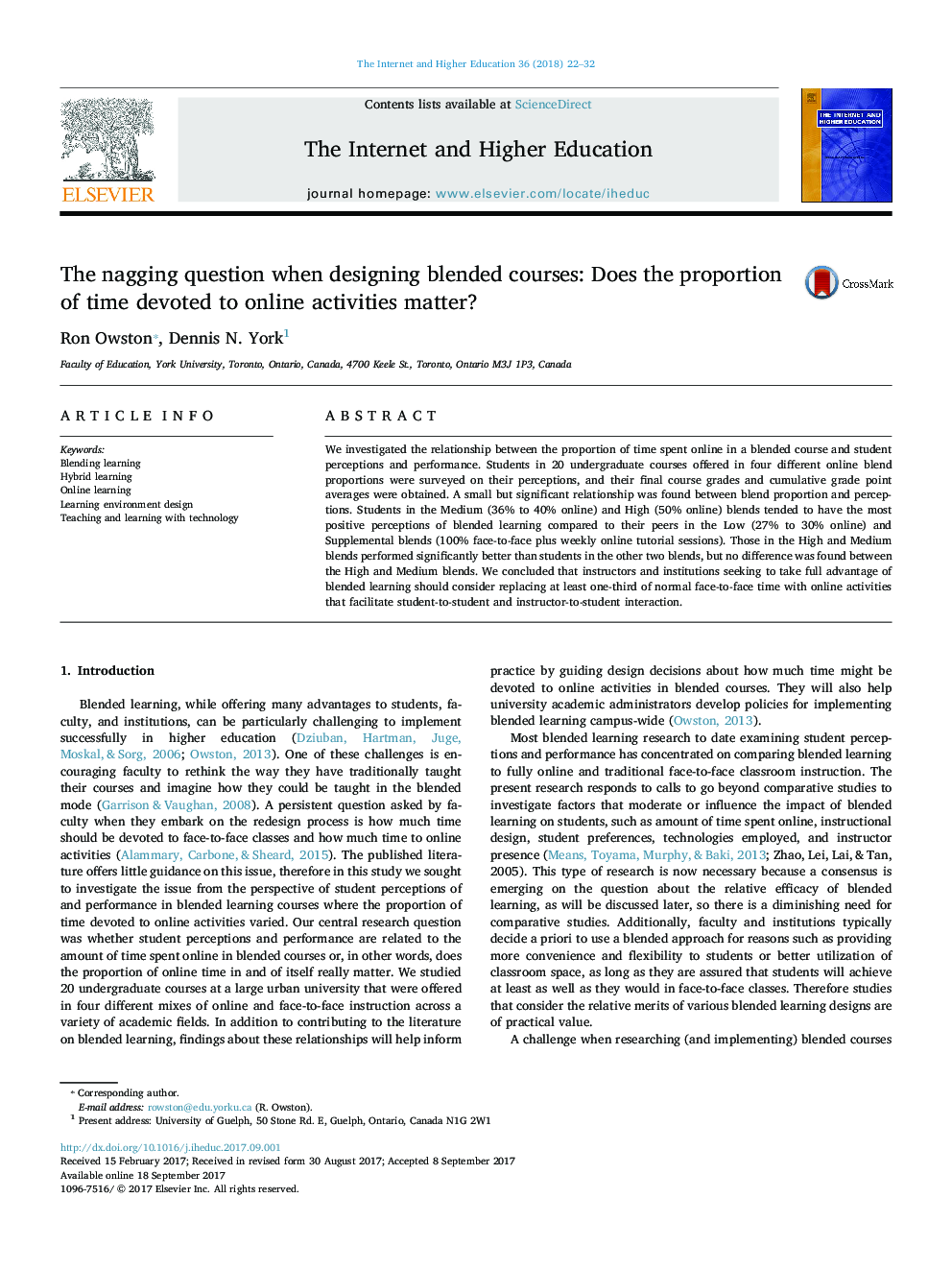| کد مقاله | کد نشریه | سال انتشار | مقاله انگلیسی | نسخه تمام متن |
|---|---|---|---|---|
| 4938791 | 1435574 | 2018 | 11 صفحه PDF | دانلود رایگان |
- Students perceive blended learning more favourably when about 33% to 50% of the course is online.
- Students perform significantly higher in blended courses when about 33% to 50% of the course is online.
- More research is need to determine if a 50% blend is the optimal proportion of online time for a blended course.
We investigated the relationship between the proportion of time spent online in a blended course and student perceptions and performance. Students in 20 undergraduate courses offered in four different online blend proportions were surveyed on their perceptions, and their final course grades and cumulative grade point averages were obtained. A small but significant relationship was found between blend proportion and perceptions. Students in the Medium (36% to 40% online) and High (50% online) blends tended to have the most positive perceptions of blended learning compared to their peers in the Low (27% to 30% online) and Supplemental blends (100% face-to-face plus weekly online tutorial sessions). Those in the High and Medium blends performed significantly better than students in the other two blends, but no difference was found between the High and Medium blends. We concluded that instructors and institutions seeking to take full advantage of blended learning should consider replacing at least one-third of normal face-to-face time with online activities that facilitate student-to-student and instructor-to-student interaction.
Journal: The Internet and Higher Education - Volume 36, January 2018, Pages 22-32
